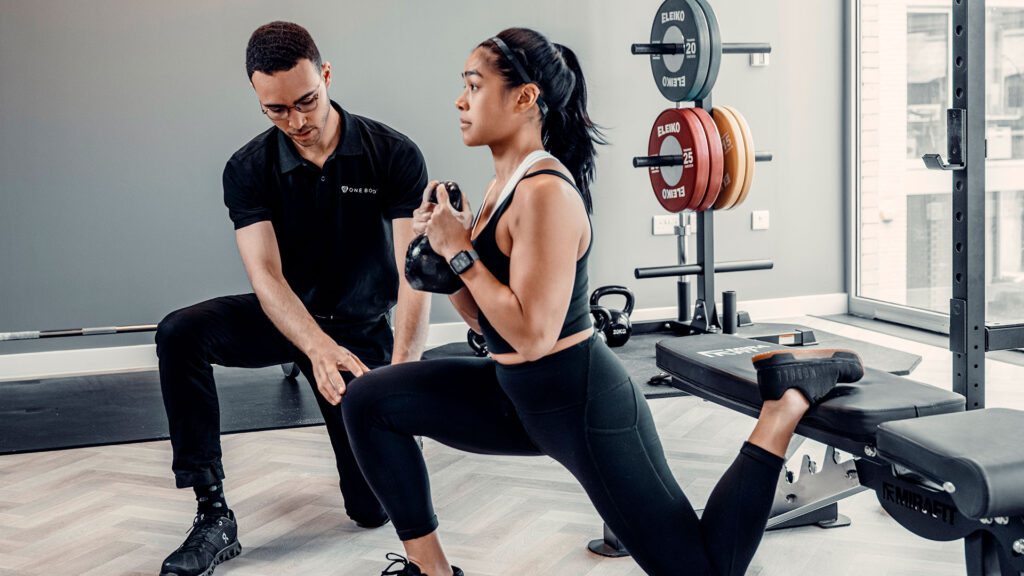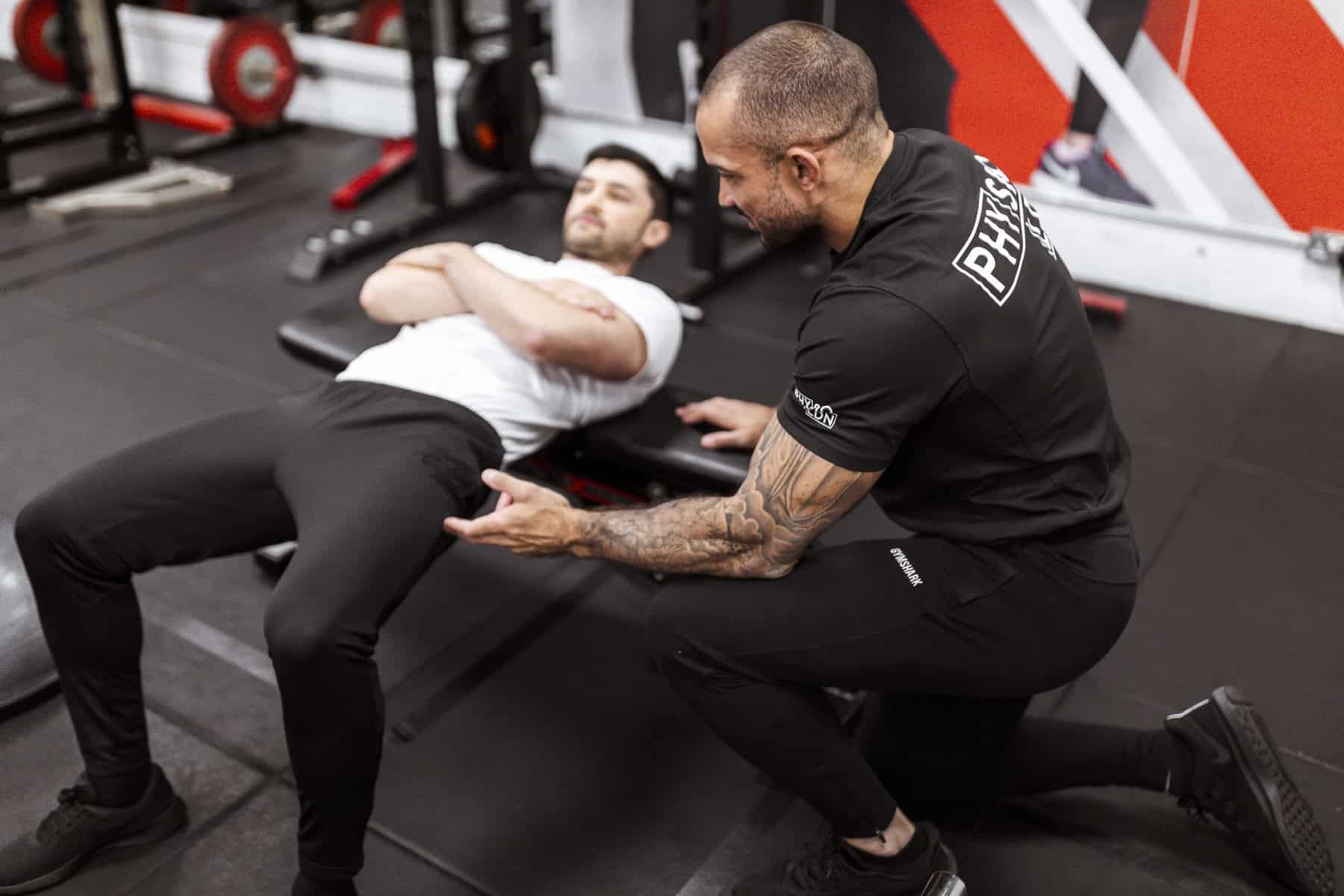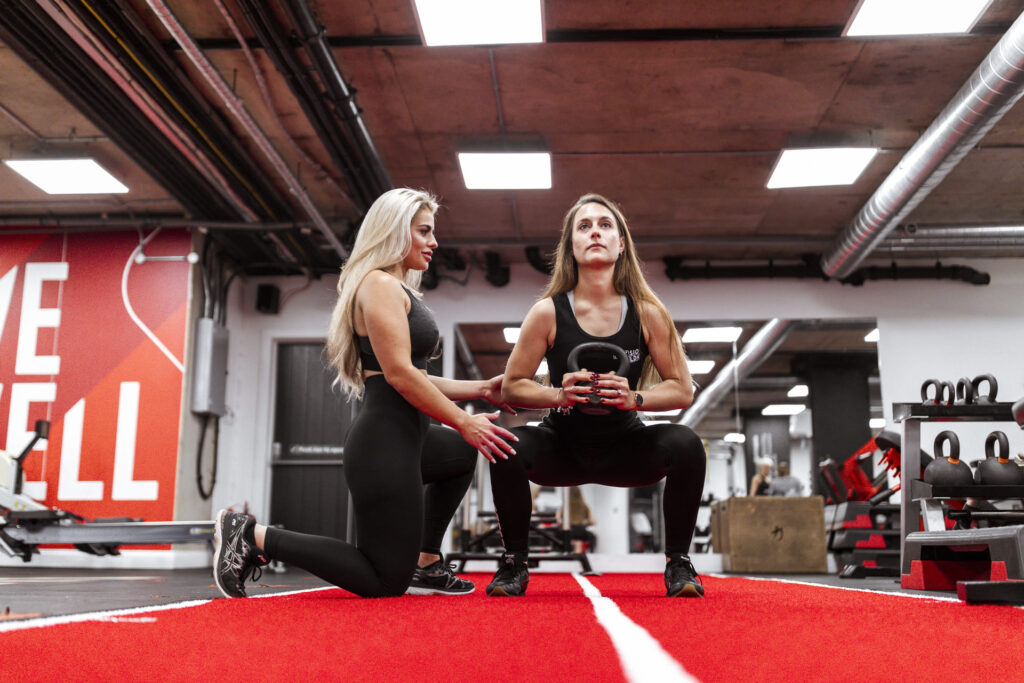Table of Contents
Main Takeaways
- Deep and poorly controlled squats spike patellofemoral and tibiofemoral forces.
- Parallel depth, hand support, and strict knee-over-toe alignment reduce load.
- Strengthen gluteus medius, quads, hamstrings; fix valgus to protect knees.
- Modify volume/technique if you have PFPS or OA; consider physio guidance.
- Footwear, warm-ups, and mobility work matter as much as strength training.
Squats are a fundamental exercise embraced by fitness enthusiasts and athletes alike for their ability to build strength, improve mobility, and enhance overall lower body function. However, they are also a common culprit behind knee pain, especially when performed incorrectly or without proper precautions. Understanding why squats can cause knee discomfort and how to perform them safely is essential for anyone looking to protect their knee health while reaping the benefits of this powerful movement.
Research has shown that knee joint forces during squats can be substantial, with the tibiofemoral and patellofemoral joints experiencing forces multiple times body weight. For instance, a study revealed that squats with hand support can reduce the right tibiofemoral joint force from 321% to 278% of body weight and the patellofemoral joint force from 427% to 356% of body weight, demonstrating how technique adjustments can impact joint loading.
In this comprehensive article, we will explore why squats cause knee pain, how to squat safely, and exercises that can strengthen your knees to prevent injury and discomfort. Whether you are a seasoned lifter or a beginner, this guide will help you squat smarter and protect your knees for the long term. If you’re comparing care options, evidence-based knee pain treatment in London can help you stay active while you recover.
Why Squats Cause Knee Pain
Knee pain during or after squatting is a common complaint, and it often stems from excessive joint stress, improper form, or underlying conditions. One of the primary reasons squats cause knee pain is the high compressive forces placed on the knee joints, particularly the patellofemoral joint, which can reach up to 427% of body weight during deep squats. These forces increase further with deeper squat depths, which significantly raise peak knee extensor moments and loading.

Deep squats, especially those beyond 50° of knee flexion, are associated with the highest retropatellar compressive forces and stresses. This elevated loading can increase the risk of knee joint injuries and exacerbate conditions such as patellofemoral pain syndrome and osteoarthritis. Individuals with patellofemoral pain syndrome often experience tension overload in the knee when flexion ranges between 60° and 90°, which is a common range during squats, potentially worsening their symptoms.
Another factor contributing to knee pain is impaired muscle activation around the hip and knee. Research has found that people with patellofemoral pain syndrome often have reduced gluteus medius activity during squats. This muscle plays a crucial role in controlling hip adduction and internal rotation, which affects knee alignment and stability. Weakness or poor control in this area can lead to abnormal knee tracking and increased joint stress.
Furthermore, occupational factors such as frequent squatting combined with heavy lifting have been linked to worse cartilage morphology scores at the patellofemoral joint, suggesting a higher risk for knee osteoarthritis. This highlights the importance of both technique and volume management in squatting activities to protect knee health.
In addition to the biomechanical factors, the role of footwear cannot be overlooked. Wearing inappropriate or worn-out shoes can alter the biomechanics of squatting, leading to improper foot alignment and weight distribution. This misalignment can further exacerbate knee pain, as the body compensates for the lack of support and stability.
Proper footwear designed for squatting can help maintain optimal foot positioning, thereby reducing the risk of knee injuries and enhancing overall performance during the exercise.
Moreover, individual anatomical variations, such as limb length and the angle of the femur, can also influence how squats affect the knees. For instance, individuals with a greater Q-angle, which is the angle between the hip and knee, may be more susceptible to knee pain during squats due to increased lateral forces acting on the patella.
Understanding these anatomical differences can help trainers and athletes tailor their squatting techniques and training regimens to minimize the risk of injury and enhance knee health.
Safe Squatting Techniques
Proper squat technique is vital to minimize knee stress and prevent pain. One effective strategy is to limit squat depth, especially for those with pre-existing knee issues. Parallel squats, where the thighs are roughly parallel to the floor, generate significantly less peak knee extensor moments compared to full-depth squats, reducing knee loading.
Hand support during squats can also help reduce knee joint forces. By stabilizing the body, hand support decreases tibiofemoral and patellofemoral joint forces, making squats safer for individuals prone to knee pain.
Maintaining proper knee alignment is equally important. Avoid letting the knees collapse inward (valgus) during the squat, as this increases stress on the joint and surrounding structures. Strengthening the hip abductors and external rotators, particularly the gluteus medius, can improve control over knee displacement and reduce injury risk.
Other key tips for safe squatting include:
- Keep your feet flat and evenly distribute your weight.
- Engage your core to support your spine and pelvis.
- Use controlled movements rather than rapid or jerky motions.
- Warm up thoroughly before squatting to prepare muscles and joints.
For those with knee osteoarthritis or other joint concerns, consulting a professional knee pain physiotherapist can help tailor squat variations and modifications to individual needs, ensuring safe and effective exercise. Additionally, incorporating flexibility and mobility exercises into your routine can enhance your overall squatting performance. Stretching the hip flexors, hamstrings, and quadriceps can improve your range of motion, making it easier to achieve proper squat depth without compromising form.
Furthermore, consider the footwear you use during squats. Properly fitted shoes with adequate support can significantly affect your stability and balance while squatting. Shoes designed specifically for weightlifting or those with a flat sole can provide a solid foundation, allowing for better force transfer through the feet and into the ground, ultimately enhancing your squat mechanics. Always remember that the goal of squatting should be to build strength and endurance while prioritizing safety and injury prevention.
Exercises to Strengthen Knees
Strengthening the muscles around the knee and hip is crucial for supporting the joint during squats and reducing pain. Targeted exercises can improve muscle activation, joint stability, and movement mechanics.

Key muscle groups to focus on include the quadriceps, hamstrings, gluteus medius, and hip external rotators. Strengthening these muscles helps control knee alignment and absorb forces during squatting. This is particularly important for athletes and active individuals who rely on their knees for performance in various sports, as well as for those who may be recovering from injuries or looking to prevent future issues.
Examples of beneficial exercises include:
- Gluteus Medius Strengthening: Side-lying leg lifts, clamshells, and band walks can activate and strengthen this muscle, improving hip control and knee tracking.
- Quadriceps Strengthening: Straight leg raises, wall sits, and step-ups build the muscles that support knee extension and stability.
- Hamstring Exercises: Bridges and hamstring curls enhance posterior thigh strength, balancing forces around the knee.
- Balance and Proprioception: Single-leg stands and stability ball exercises improve joint awareness and muscular coordination.
Incorporating these exercises into a regular routine can help mitigate the tension overload experienced during knee flexion between 60° and 90°, which is often problematic in squatting movements.
Moreover, it’s essential to consider the importance of proper form and technique while performing these exercises. Engaging in strength training with a focus on alignment can prevent compensatory movements that may lead to injury. For instance, during squats, ensuring that your knees track over your toes and not collapsing inward can significantly reduce the risk of strain on the knee joint.
Additionally, incorporating flexibility and mobility work, such as dynamic stretching or yoga, can enhance overall joint function and complement your strengthening efforts. See the blog while knee pain stretching.
For personalized guidance, visiting a physiotherapy clinic such as One Body LDN in London can provide expert assessment and tailored rehabilitation plans. Their team of highly trained knee pain physiotherapists specializes in musculoskeletal conditions and can help you strengthen your knees safely and effectively, ensuring you can squat without pain and perform daily activities with confidence.
They may also incorporate modalities such as ultrasound therapy or electrical stimulation to aid in recovery and enhance muscle activation, further supporting your journey to stronger, healthier knees.
FAQ
Can squats worsen knee osteoarthritis?
Deep squats can increase compressive forces on the patellofemoral joint, potentially exacerbating knee osteoarthritis symptoms. It is advisable to limit squat depth and consult a physiotherapist for personalized advice.

Moreover, it’s essential to recognize that every individual’s knee condition is unique. Factors such as age, weight, and overall fitness level can influence how squats affect knee health. Some individuals may find that modified squat variations, such as box squats or wall squats, can provide a safer alternative while still allowing for strength training. Engaging in low-impact exercises, like swimming or cycling, can also help maintain fitness without putting undue stress on the knees.
How can I reduce knee pain during squats?
Using proper technique, limiting squat depth, engaging hand support, and strengthening hip and knee muscles can reduce knee pain. Avoiding inward knee collapse and warming up properly are also important.
In addition to these strategies, incorporating flexibility exercises such as yoga or dynamic stretching can enhance joint mobility and reduce stiffness, which may contribute to knee discomfort during squats. It’s also beneficial to pay attention to footwear; supportive shoes with adequate cushioning can help absorb impact and provide better alignment during squatting movements. Keeping a consistent routine of strength and flexibility training can lead to long-term improvements in knee health.
Are parallel squats safer than full-depth squats?
Yes, parallel squats generate less peak knee extensor moments and lower joint loading compared to full-depth squats, making them safer for individuals with knee concerns.
Additionally, parallel squats can still effectively engage the major muscle groups, such as the quadriceps and glutes, without the increased risk associated with deeper squatting. This makes them an excellent option for those recovering from injury or those who are new to strength training. Gradually progressing to deeper squats, under the guidance of a fitness professional, can help build confidence and strength while minimizing the risk of injury.
What exercises help strengthen the knees for squatting?
Exercises targeting the quadriceps, hamstrings, gluteus medius, and hip external rotators, such as leg lifts, wall sits, bridges, and clamshells, help strengthen the knees and improve stability.
Incorporating resistance bands into these exercises can further enhance muscle activation and stability around the knee joint. For instance, lateral band walks can effectively target the hip abductors, which play a crucial role in maintaining proper knee alignment during squats. Additionally, balance exercises, such as single-leg stands or stability ball squats, can improve proprioception and coordination, which are vital for safe and effective squatting.
When should I see a physiotherapist for knee pain from squats?
If knee pain persists despite technique adjustments and strengthening exercises, or if pain limits your daily activities, consulting a physiotherapist can provide a thorough assessment and tailored treatment plan.
A physiotherapist can also help identify any underlying biomechanical issues that may contribute to knee pain, such as muscle imbalances or joint instability. They may recommend specific modalities, such as ultrasound therapy or dry needling, to alleviate pain and promote healing. Additionally, they can guide you through a progressive rehabilitation program, ensuring that you safely return to squatting and other physical activities.
Can occupational squatting affect knee health?
Frequent occupational squatting combined with heavy lifting has been linked to worse cartilage health in the patellofemoral joint, increasing the risk of osteoarthritis.
It’s important to consider ergonomic practices in the workplace to mitigate these risks. Implementing strategies such as alternating between sitting and squatting, using knee pads, or adjusting the height of work surfaces can help reduce the strain on the knees. Employers can also play a role by providing education on proper lifting techniques and encouraging regular breaks to minimize repetitive stress on the joints.
Understanding the mechanics behind knee pain from squats and adopting safe techniques can empower you to maintain an active lifestyle without compromising joint health. If you experience knee pain during squats, seek professional advice to ensure your approach is both effective and safe.
Get Expert Help for Your Knee Pain at One Body LDN
If knee pain from squats is holding you back, it’s time to get to the root of the problem with One Body LDN, voted as the best London physio clinic by thousands. Our award-winning team of physiotherapists, including former athletes and NHS specialists, is dedicated to providing you with an expert assessment and a tailored rehab plan. We specialize in musculoskeletal physiotherapy, post-operative care, and sports injuries, ensuring you receive the highest quality treatment for a range of conditions. Don’t let your symptoms escalate; book your free initial assessment today and take the first step towards lasting relief and a return to your active lifestyle.
References
- Hand support reduces tibiofemoral & patellofemoral forces (PubMed)
- Squat depth increases peak knee extensor moments (PubMed)
- Deep knee flexion & retropatellar stress (PubMed)
- PFPS tension overload at 60°–90° flexion (PubMed)
- Reduced gluteus medius activity in PFPS during squats (ScienceDirect)
- Occupational squatting, lifting & PFJ cartilage health (PMC)
- Hip abductor/external rotator strengthening for knee control (J Clin Med)
- Deep squats & osteoarthritis symptom considerations (PubMed)


